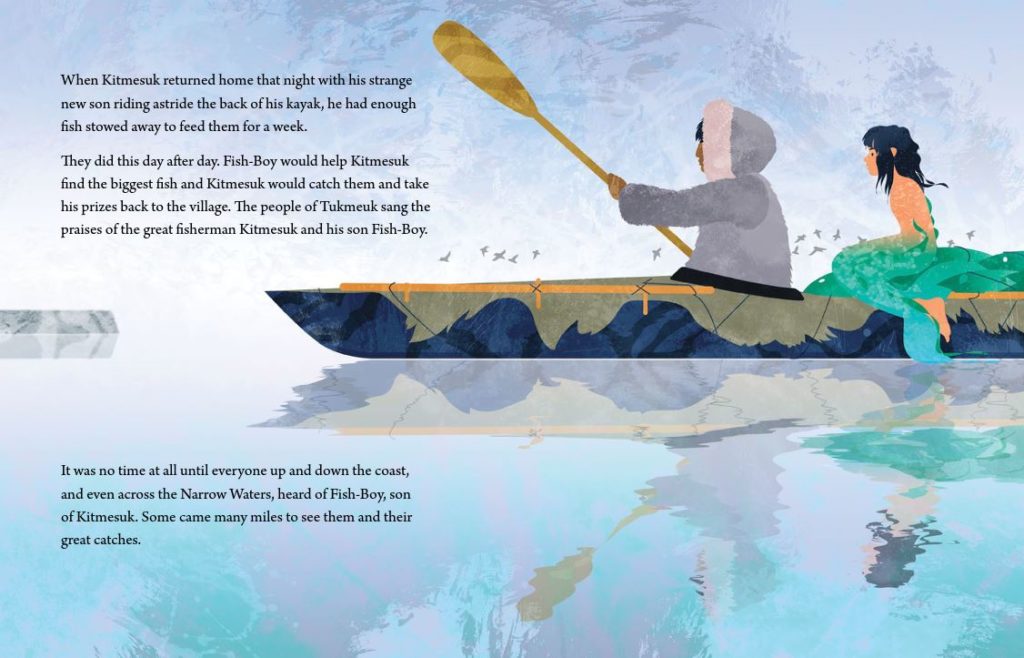 Fish-Boy by Vanita Oelschlager
Fish-Boy by Vanita Oelschlager Illustrator: Mike Blanc
Published by Vanita Books on May 1, 2018
Source: NetGalley
Genres: Folktale, Childrens
Pages: 48
Format: eARC
Purchase at Bookshop.org
Add on Goodreads

The Arctic region of North America is a land of long days, icy cold, hardy people and peculiar creatures. The Inuit people there have made traditional use of remarkable folk tales to find truth and explain the mysteries of an astonishing world.
In Fish-Boy, An Inuit Folk Tale, Vanita Oelschlager retells a tale passed down by a wise old Inuit. It's an origin story involving a little magic and a very odd boy with a large heart for friendship. On a journey with his new father, he must confront misfortune and the malice of cold hearted villagers. But he has a way.. and a lesson for all in the virtues of kindness and hospitality.
I wanted to love Fish-Boy. It’s a re-telling of an Inuit tale and the illustrations are gorgeous. It has several good lessons about acceptance, hospitality and fear. It also shows that people with handicaps can be full contributors to a community. There’s a bit of magic and like in any good tale, the bad guys get punished and the good guys get rewarded.
My problem was it was a little confusing and perhaps a touch long. The legend is being told by an elder to a boy during a trading expedition. I like that the emphasis here is on passing down stories. The legend itself is about Fish-boy and his adoptive father and tells why there are so many puffins near the Bering Strait. There were a couple bits that I didn’t quite understand why they happened, but I liked the fish-boy’s attitude and his father’s kindness.
The illustrations are lovely and may be worth picking up the book on their own. Here’s a page from not long after fish-boy meets the man who takes him in as his son.
I do think this would be a nice book to read with kids to help them learn about other cultures. There is a great little dictionary in the back, explaining some of the words that might be unfamiliar. There’s also a prompt asking readers to make up their own stories about how something came to be or why we do things as we do.


Sounds really cute! I wonder if the parts that were hard to follow would bother a kid. In my experience, children often make amazing leaps of logic and/or they just accept stories as they come.
That’s true, kids can often overlook things that bug me.
I agree with you about the illustrations. Too bad the book’s a little confusing. Maybe a teacher could use it with a lesson that’s being taught.
Yeah, maybe it would be better as a physical book, too. I read a digital ARC and maybe that wasn’t the best option.
Sorry you didn’t like it more.
Me too. I really wanted to.